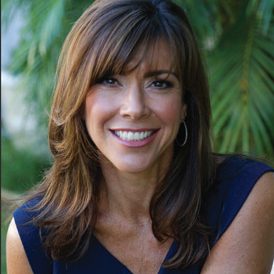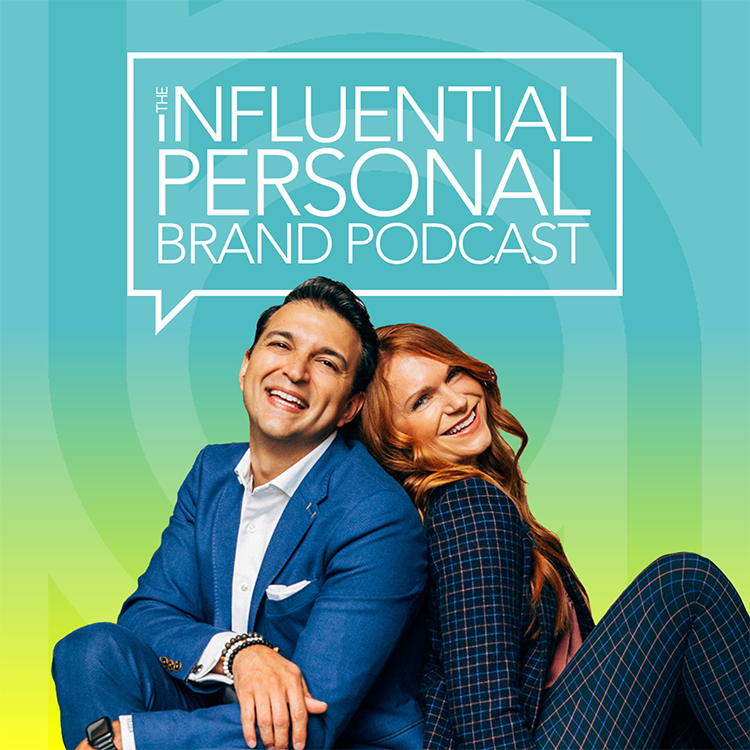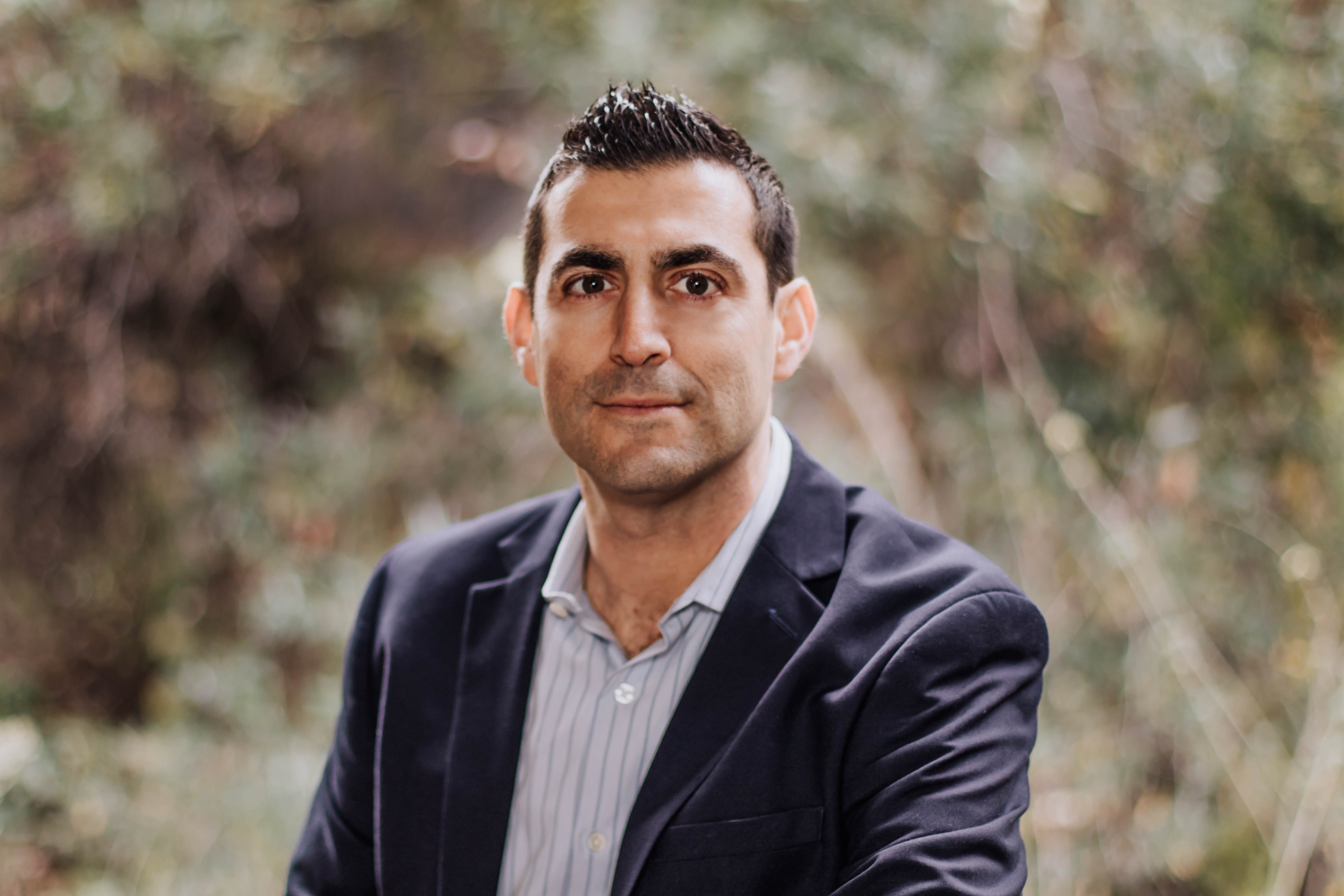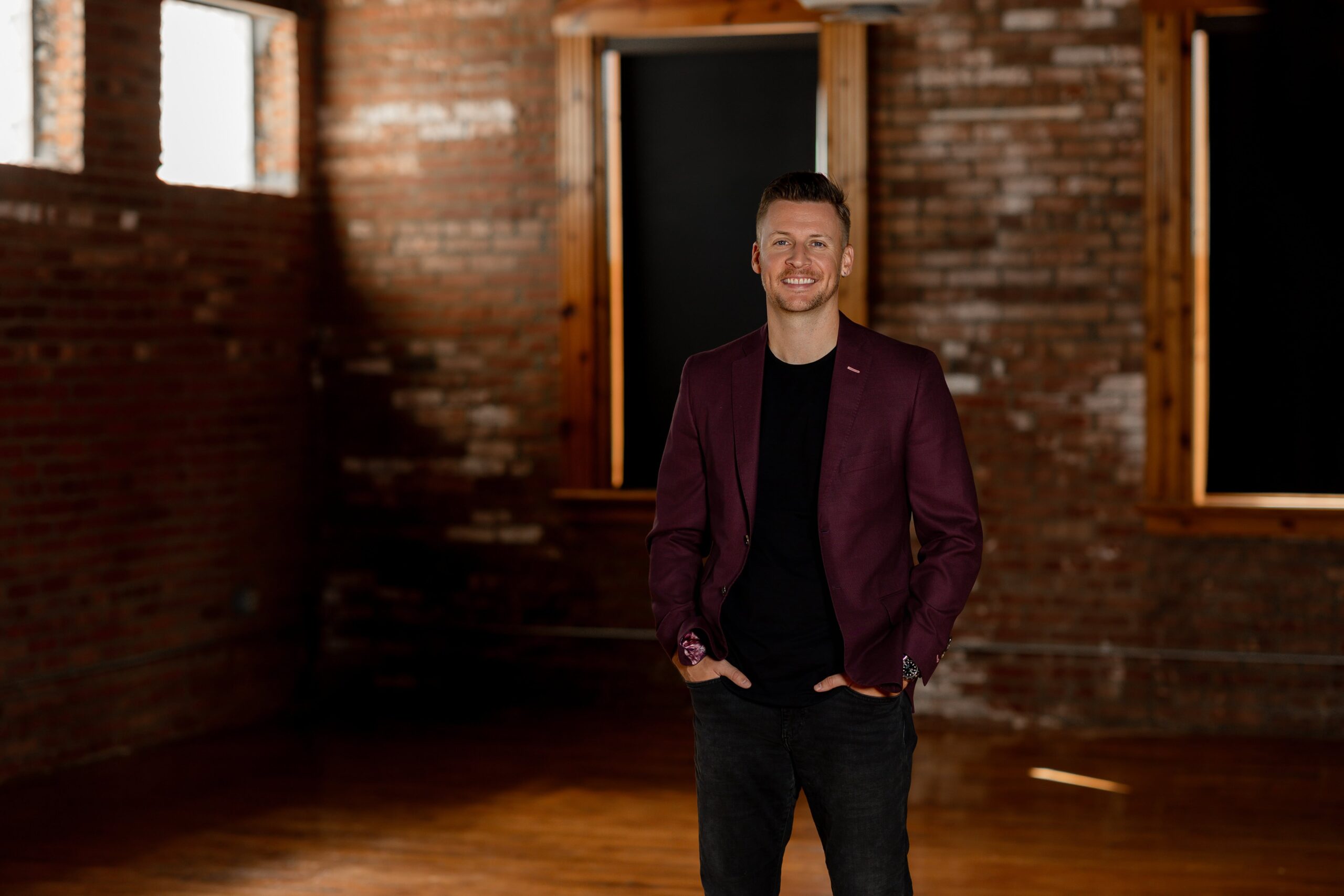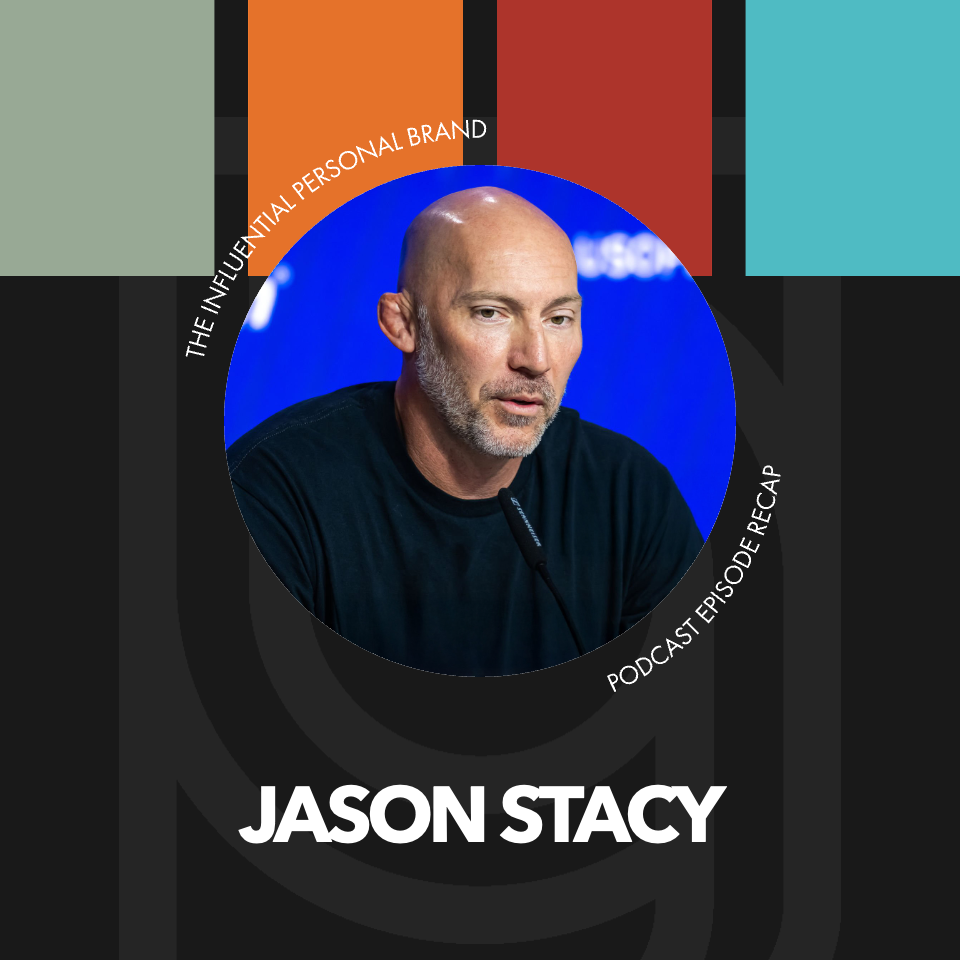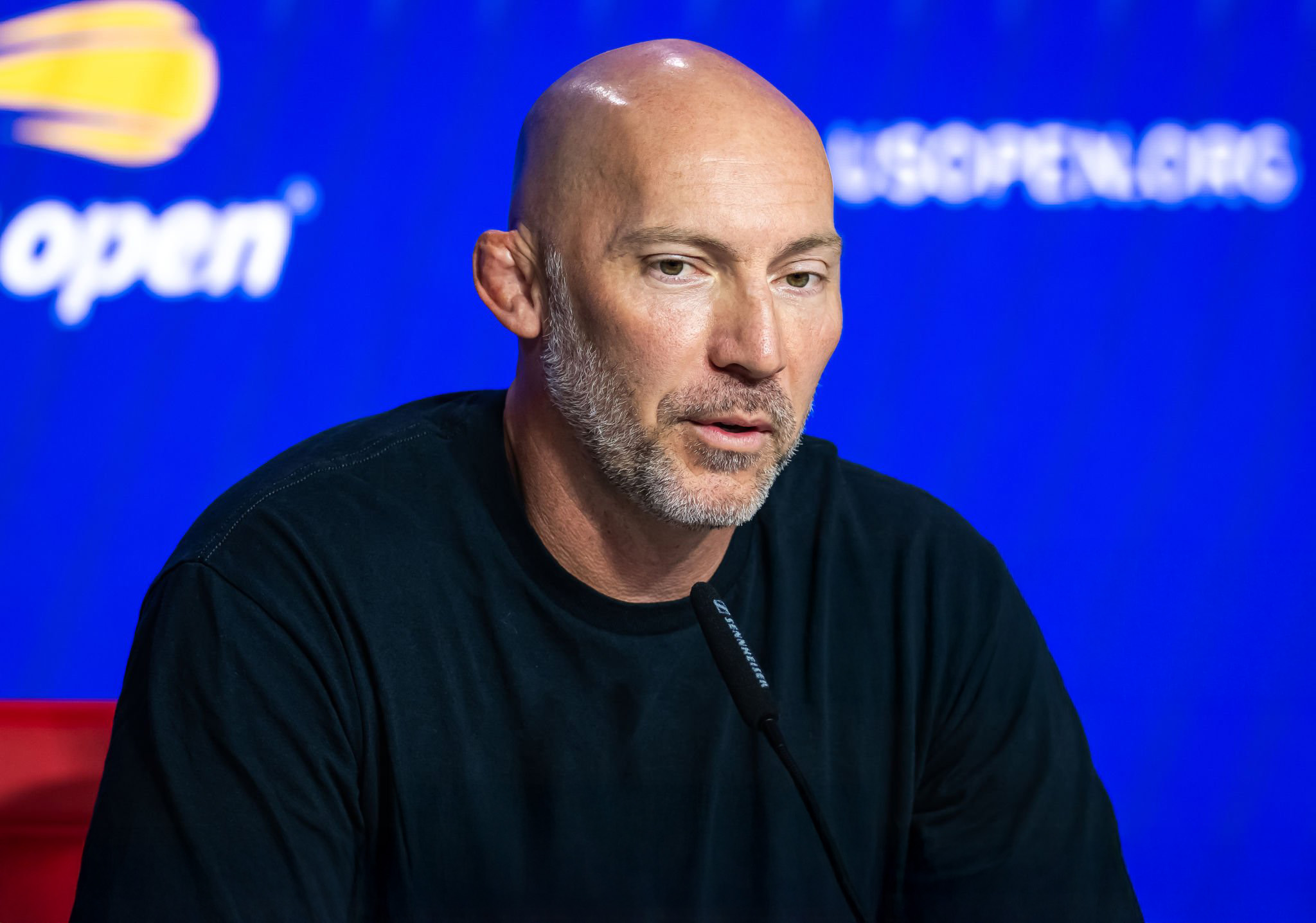RV (00:02):
Well, it’s always an honor when I get to bring to you someone who is a friend, a longtime friend, and someone that I’m a fan of, someone who I would consider a mentor and a coach, somebody that I’ve learned from for years and years and years. And that’s what’s gonna happen today. We have TerriSjodin actually Terri and I both share a history with the National Speakers Association, and she also, like me, she was inducted into the CPAE, the Council Peers of Award award for Excellence, which is the National Speakers Association Professional Speaking Hall of Fame. For 25 years, she has worked as the founder of SHO Dean Communications. She specializes in public speaking sales training. It’s a consulting firm, and she’s a New York Times bestselling author. She’s been featured on the Today Show, Bloomberg, CNN, and just lots of other major, you know, talk shows, TV, radio also has become really popular as a LinkedIn learning instructor. And she has a new book out called Presentation Ready. Improve your Sales Presentation Outcomes and Avoid the 12 Most Common Mistakes. Terri, welcome to the show, friend. Thank you,
Speaker 2 (01:14):
Rory. I adore you. Thank you. I appreciate the opportunity. It’s fun, .
RV (01:18):
So, one of the things that we were talking about is this book in a sense is a little bit more academic, I guess we’ll say, than some of your other books. So talk us through what, how the academics land, why the academics land, and exactly what was some of the research that went into putting this together?
Speaker 2 (01:40):
Oh, I love it. Thank you for asking. So yes I’m going on almost 30 years now as a full-time professional speaker and trainer. Come on,
RV (01:49):
Come on. 30 years, full-time. We need to get you a watch or something, man. .
Speaker 2 (01:54):
I, I know. It’s crazy. And, you know, and I think as you and I talk about the evolution of a speaking career, you know, each piece builds on the next piece. And so you can grow and expand in a variety of different ways. My emphasis has always been in the area of public speaking and persuasive presentation skills. And the first book that kind of put me on the map, if you will, was called Sales Speak, which addressed the nine biggest sales presentation mistakes that professionals make. So fast forward, as we’re rolling into 2019, I’m like, wow, you know, we’re, we’re coming up on almost 20 year anniversary of that book. It would be wonderful to do a deep dive research study and do a formal study and ask, are these still the, the most common mistakes? And if so, why? And if not, why not?
Speaker 2 (02:42):
So I reached out to a colleague of mine who’s the head of the communications department at San Diego State University, full confession, my alma mater. And she said, yo, this would be really interesting to do a joint venture as an alumni pairing with faculty and students at the campus. So we ran the first phase of the study, and it was focused on a specific question. Does making a sales presentation mistake matter? Does it cost someone a win or a deal or an opportunity? And we did it using a formal Qualtrics platform. Again, almost 2,500 professionals participated in the study, and we garnered all of the content from people who only sold a product service or cause, meaning that their livelihood depended on their ability to build and deliver a persuasive presentation. And my promise was, if we were gonna do this kind of research, then there should be no research about us without us, all of it should come from salespeople. So that was really the underpinning of where the research came from. And then the findings of course, evolved over time.
RV (03:47):
Mm-Hmm, . So are the 12 the same? Are the nine are the nine that you originally wrote about a subset of the 12 and there’s three more, or have they adapted?
Speaker 2 (03:58):
Yeah, great question. So yes we found, we were able to verify that the nine mistakes were still playing out. There were three new additional mistakes that added to the list and what was really painful and, and shows, you know, it’s just about resilience. And you and I can talk about this, but, you know, so we were really excited. We launched the first phase of the results report on March 5th, 2020, and it was amazing for all of two weeks, , then the pandemic hit. Wow. So then we thought, all right, let’s just lean into this. And we ran a second phase of the study that was entirely based on virtual results for sales people who are presenting virtually. And then we did a third phase of the study, which covered in-person virtual and hybrid presentations. That study closed in September. And we launched the results then. And then God bless you know, LinkedIn. ’cause They jumped in and wanted to do a course on this material. And then we sold the program to McGraw Hill, or sold the manuscript to McGraw Hill, and they moved very quickly so that their content would be incredibly fresh. And that’s how, but, but all of these, to answer your question, this is a very long answer. All 12 mistakes were relevant whether people were in the first phase, second phase, or third phase of the research study, then. So I meaning
RV (05:18):
Hybrid or in person, doesn’t matter.
Speaker 2 (05:21):
Did not matter. All the 12 mistakes still played out.
RV (05:25):
Fascinating. So which one, which one of the original nine do you think is most applicable to personal brands? Right. So, so, you know, anyone who’s speaker, author, coach, or a, a lot of professional service providers listen to this, right? Chiropractors, doctors, lawyers, anyone using their personal brand to like, grow their business, direct sales real estate, mortgage,
Speaker 2 (05:55):
All of
RV (05:55):
It. . If you think of those nine, like is there one, is there one that jumps out to you to go like, man, this is the one. Or, or talk us, talk us through some of the, some of the big ones.
Speaker 2 (06:04):
So so I believe, and very passionately in the power of the spoken word, no email, text message, or viral video will ever replace it. One, human being speaking to another in real time can shift everything. So to your point, whether somebody sells or promotes a product, a service, or a cause, wherever they are, they, they made up the body of these research participants. And there were actually three mistakes that rose to the top, regardless of gender, regardless of generation, regardless of how many people, how many years of experience people had. So the number three biggest mistake that most people self-confessed, which was also in phase one, was that most people had a tendency to conclude at the end of a presentation, but they did not close. They didn’t have an ask the number two biggest mistake that most people,
RV (06:56):
People, sec, hold on a second. Can I just wanna double tap on that and zoom in there on that one. So what’s the difference between concluding and closing?
Speaker 2 (07:03):
I love that question. So a conclusion as a wrap up, right? A close is your specific call to action. What do you want people to do as a result of the message? So what you’ll notice is when somebody’s giving a presentation, they might say, okay, so do you have any questions? And the listener will say, Nope. And you’ll say, great. Okay, thank you so much. So if there’s anything we can do, like, don’t, you know, please let us know. Call us. Call us. Isn’t a close, A close is an action step. What do you want the people to do as a result of the message? So a simpler, easier line, and we can get into that in later terms. But after you make your proposal or your offering, you could say something simply like, would you like to move forward? You’re asking them to move forward. You’re asking them for, to take some sort of action step as a result of the message.
RV (07:58):
So you’re, and you’re for a dec you’re asking them to make a decision in some regard also. Yeah. Right.
Speaker 2 (08:04):
Whether you’re asking them to set up the next appointment time, whether you’re asking them to make a commitment to give you a referral or asking them to make a decision right then and there to say yes and move forward. Cut a check, sign the contract. Mm-Hmm. , do the deal. . Mm-Hmm,
RV (08:20):
. That’s okay. I love it. I tons of people do that, right? I mean, it’s like every, every, whether it’s a blog post or a podcast or a presentation in front of a thousand people, it’s just like, eh, it’s so great to be here. And it’s like, you’re, you’re walking away. Like, you’re literally just like, literally leaving money, just going, okay, I worked hard for my money, and then I didn’t actually collect any of it. I just like left it there.
Speaker 2 (08:44):
It’s horrifying. And, and we, I mean, I work with some incredible people and they’ll say, oh my gosh, I’m alu, I’m not a closer. Oh, don’t,
RV (08:54):
Don’t concluder. Don’t be a concluder, don’t a con. Okay. All right. What was, what was the second most
Speaker 2 (09:00):
Number two biggest sales presentation mistake that people self confess? Remember, these are be based on self-identification. Okay. is that they are far too informative in nature rather than persuasive. They data dump. Mm. Overly informative versus persuasive.
RV (09:16):
So
Speaker 2 (09:17):
There’s a lot of reasons for that. Like, the biggest one is there’s no risk in being informative. We don’t hear, no, we don’t get pushback while we’re being informative. And it’s like, somewhere along the line, people started feeling like, I know maybe if I just give enough information to people, then they’ll just be able to sell themselves. And, and that’s lovely. But that’s, that’s not how adult decision making processing works. So
RV (09:39):
So how does it work then? Like what, so I think I know what informative looks like. I’m basically just spewing in information and facts and you know, ideas at you.
Speaker 2 (09:52):
Yes. Data dumping is part of that overly informative phase. But okay, so I’ll get really academic here. In communication, there are three types of presentations, informative, persuasive, and ceremonial. An informative presentation by design is supposed to be unbiased. It’s supposed to tell all sides of the story. It’s supposed to be cooperative versus competitive, and it’s sole purpose is to promote learning. That’s why you’re there. So unless you’re going out into the field and you’re like, hi, Brett, all the material of all my competitors, because I just wanted you to see everything that’s out there, and you can pick anyone you want to, because quite frankly I’m not attached to the outcome. It doesn’t matter to me. I’m not gonna profit. I’m not gonna do any, like, I’m just here to be a philanthropist of information. I mean, if you, that’s the only way that you’re really authentically informative.
Speaker 2 (10:43):
A persuasive presentation by design has intent. It means that you want somebody to do something as a result of the message. And if you are working on promoting your personal brand, if you are selling a product, a service, or a cause, you are very intentional. You want them to work with you, you want them to work with your company, you want them to do it now. So I, I’m trying to help people to just love that, like own it and love it and roll around in it. And sometimes people say, Terry, are, are you selling me? I’m like, yes. That’s what I do. Like no one’s shocked, right? , that’s what I do. And I think we oftentimes we get in our own way and we overcomplicate the clothes, we overcomplicate what our responsibility is as a presenter when we walk into that moment. And as you know,
RV (11:28):
How do you get past that fear part? Like, I, I think, like you said, you know, are you selling me? Yes. I think a lot of people would say, are you selling me? No, no. I don’t, don’t think of me as a salesperson. I’m not selling. I don’t wanna sell to you. Oh, no,
Speaker 2 (11:40):
I, I I own it. I love it. How do you, I
RV (11:42):
I know that you do. How do you coach? I I know that you do, how do you wrap your mind around that? Or how do you help other people wrap their mind around that? Like, I don’t wanna be thought of as a pushy salesperson,
Speaker 2 (11:58):
And, and I love the, that you put the emphasis on pushy Look I believe in the power of the sales professional. We move commerce. Nothing happens until somebody sells something, but we do, we shrink from it. And so I think what makes this book different and what makes this conversation different is, you know, my, my training is in academic focus. I was on the speech and debate teams in high school and in college, and I use debate strategy in a selling environment so that I can apply persuasive arguments to move a transaction forward. I don’t think it has to be hard sell. I don’t think you have to have a negative connotation of what a salesperson is. I think you can craft a beautiful, elegant, persuasive message and move people towards action without being hard sell. So to kind of circle back to your question, how do you get them to lean into owning being a sales professional?
Speaker 2 (12:56):
And I think if you, if you own it and you believe in it, then it’s a lot easier to have that conviction. Somebody asked me, okay, Terry, in all the research that you’ve been doing, what’s the hardest product to sell? And I’m like, the hardest product to sell is the one you don’t believe in. Mm. You know? So if you, if you believe in, in yourself and the services that you offer, then the bigger question that I’m trying to help people with is, you can’t just give people a laundry list of the things that you do. You have to construct a logical, persuasive case to move them towards action. And so there is a clean process. Again, I don’t use any weird, crazy manipulative closing tactics. I use strategies that are based on logic and evidence and social proof. And I think that when you give people those tools, they can feel better about being persuasive and being, and crafting a compelling message. They’re like, woo. Like I hear all the time people going, woo, I, oh, I wish I would’ve known this 20 years ago. Like, I, it freaks me out to think how much money I must have left on the table. But once you give them, then they’re liberated. And I just try to teach people to fish so that they can go and do it on their own.
RV (14:06):
How do you close, like how do you, we were talking about that just a moment ago too. Like, do you like, like if, if you had to give someone like, you know, a five minute crash course on closing you gave us that question earlier, which I think was, do you wanna move forward? Something like, something to that? Yeah. Would you
Speaker 2 (14:27):
Like to move forward?
RV (14:29):
Is that at the end of that? Is it as simple as that? It’s like one, here’s one, just one question. Boom, that’s a close.
Speaker 2 (14:33):
Well, yes or no, but Okay. So it’s so there’s a, a segue here. So we talked about the number three biggest mistake out of the 12 that people self confess, which is that they clue, but they don’t close. The number two mistake that they self confess is that they’re overly informative versus persuasive. And the number one biggest mistake that most people self confess is that they wing it. They roll in hot, and they say things like, you know, I’ve been doing this for a really long time. I can do this in my sleep, but you can’t. So in order to structure, so you have to start initially with the structure. How did you lay out your talk? And there’s a process that we talk about in the book. There’s a five step process that leads a listener into logical thought processing.
Speaker 2 (15:19):
So when you, and, and it starts with, you know, did you create an awakening? What are the needs steps? How do you address satisfaction, visualization and change? It’s called Monroe’s motivated sequence. And it’s really based on a human being’s a authentic way to make a decision so that they feel good about it. And so it’s really kind of a very big topic to address right here, but it goes back to the number one mistake you have to prepare. You have to block it. Just like anything, you wouldn’t just, you know, throw content up on your website and think, oh, yeah, that’s gonna be compelling. You don’t just you know, if you’re creating a brochure or you’re creating your demo video, or you’re creating your narrative on your website, whatever it is, if you always have that persuasive mindset and you use this pattern, then you’ll think to yourself, okay, what’s the awakening? What’s the need step? What’s the satisfaction step? The visualization step, and then the action step. And with that consistency, you get the outcomes that you’re looking for.
RV (16:26):
Say those again. It’s a, just the five. It’s awakening.
Speaker 2 (16:29):
Awakening, need, satisfaction, visualization, and action.
RV (16:35):
Uhhuh, , I love,
Speaker 2 (16:36):
So when somebody comes to me and they say, okay, Terry, will you watch me, watch me? I’ll say, yeah, yeah, yeah. And I, I listen to their whole talk, and then I’m asking myself, did they create some sort of awakening in my mind? Like, people think that the attention step is about having a pithy quote or maybe some statistic or some dramatic story, but that’s not what a listener needs in a buying situation. I’m not saying that you can’t use those things, but they should create an awakening. The listeners should go, wow, you know, I’ve heard this before, but the way you’re saying it, it’s landing in my mind in a different way. And now I’m curious, you know, that that awakening curiosity step is what helps you to convert someone who maybe didn’t even initially want to be there. . Like, you know not everybody as excited to hear your proposition as you are to tell it to them.
Speaker 2 (17:27):
So you have to make them intrigued and inspired to want to move forward, and you wanna do it in a way that makes you feel good about it. So that’s that whole essence. And that kind of weaves into the second part of the book. So the first part of the book is focused on how do you build your persuasive case? Okay? The second part of the book is focused on creativity and how do you really bring that message to life? How do you drive connection storytelling, all of those elements, timing, how do you use time effectively? And then the third piece is everybody’s favorite part, right? , which is all of those elements that are based on delivery. Everything from your eye contact and your body language to the way that you speak. Verbal missteps, misusing technology. I mean, all of the 12 mistakes fall.
Speaker 2 (18:14):
Like there are four mistakes that fall under case four that fall under creativity and four that fall under delivery. And I confess, you know, Rory, I have personally made every single one of these 12 mistakes, and that’s why I know they’re so costly. In the 5,000 participants that were in the study, there was really only one human that said, I don’t make any mistakes. , like on average, most people confess that they make three or four, and then most people will tell you after the fact, I’ve seen so many of these things play out. And then they start the horror stories of what they’ve seen. Totally. Yeah. So that was the second part of the study. The second part of the study said, okay, well if the first part is based on your self confessions, then the second piece would be, who better to judge sales and business professionals than other business and sales professionals? Hmm. So what did you see? And so what they identified that they noticed were the exact same 12 mistakes, but how they ranked them was different. So for example, I can tell you like the top two mistakes are being overly informative and winging it, but the number one mistake that people noticed in others was none of those things.
RV (19:27):
Okay?
Speaker 2 (19:28):
The number one mistake that people noticed in others is that that talk was boring. Boring, boring.
RV (19:33):
Uhhuh .
Speaker 2 (19:36):
So don’t you think that’s interesting that most people self-identify as being overly informative, but other people are boring.
RV (19:43):
Call it boring. Yep.
Speaker 2 (19:44):
It’s like, yeah. So we say that in
RV (19:46):
Communication. Sorry, break it theory. Sorry. To to a sweetheart. Yeah. Boring. You’re boring. We’re sleep over, we’re sleeping,
Speaker 2 (19:52):
Right? Yeah. And that’s, that is the, the, that was where things really got super crazy interesting was because we did a, a comparison of what people self-identified with what they noticed in others. And you, what you just said, Rory in instinctively is what really hit it on the head. We don’t tell people, you don’t tell someone, oh, you know, I, I thought that was really good, but you’re boring. We don’t tell people, you know, you, you have all kinds of weird, strange body language and gesturing when you speak. We don’t tell people, did you know that you say or like, or, you know, every other word. Hmm. We don’t say to people, oh, you know what, you use so many industry acronyms and I had no idea what you were talking about. I don’t, we don’t tell people. So what was fascinating is what people self-identified versus what they called out in others. And in those observations, you know, that’s where we get the learnings.
RV (20:54):
Well, and here’s something I would just say for those, if you’re listening and you are a professional speaker wanting to like, get more gigs or get higher fees, or if you’re aspiring, if you’re not getting gigs, that is people telling you you’re boring . Like everyone, like literally everybody thinks, oh, I’m, I’m great at ta. I’m, I’m so good with people. I’m, I’m great at talking to your point about like winging it. And they’re like, no, I’m, I’m so good on stage. And it’s like, well, if you’re really good people walk up to you. And after they walk up to you after and go, that was incredible. I’d like to talk to you about speaking at my event or my friend’s event, or whatever. If you’re not like they are telling you you’re boring like that, that’s, that’s a huge part of it.
Speaker 2 (21:42):
Alright. And let’s take it even to your, your seasoned pros that are on the call. You know, we have a burden to evolve our content. Mm-Hmm. . And, you know, you’ve been doing this a long time. I’ve been doing this a long time. The things that I said in that maybe we thought, oh, that put me on the map. Well, maybe it put you on the map then, but it doesn’t keep you on the map, right? Sure. You have to keep evolving and creating and researching and investigating. And then with that wisdom, you pair your street sales experience and you pair that with your wisdom, and then you have to apply it to what’s happening in the world now. And that in and of itself becomes a sales process. Because some people might say, oh, yeah, yeah, we’ve heard her before, but you want them to be like, oh my gosh, we heard her before and now her new content is meaty and really rich. Or, wow, the stuff that Rory’s doing now has just evolved into such a sophisticated level that, you know, you build street cred and credibility from a very different perspective. And I think for those people who have experience that are listening to your podcast, you know, what messages can we take from the Rolling Stones or the Madonna’s and the people that keep reinventing themselves and have incredible longevity? It’s one thing to be
RV (22:56):
Taylor Swift. Swift, our rocket ship, swift Taylor Swift man era’s to her, even though she’s young. She’s, she’s reinvented so many times. I’m a Taylor, I’m a swifty. I’m a swifty. I’m in court.
Speaker 2 (23:06):
Who isn’t? How can you not admire that woman? I
RV (23:09):
Mean, yeah, you got, you may not like her, but you gotta respect her. I mean, there’s, there’s lots of people like that in the world where I go, I don’t, I mean, I happen to like Taylor Swift, but like, there’s other people where I go, I don’t like this person at all, , but I have to respect the, the, the magnitude of how they’re playing and what they’re doing and show how they’re showing up. So that’s really powerful for reinventing. I, I, I when you look at, I I’m curious about virtual versus in-person. So you said that in the study there wasn’t, there wasn’t really any distinction. So maybe not from the study, but just I guess from your own observation, because so much of our communication is virtual today. I mean, just so much of it. Are there, are there certain major mistakes that people do make when they’re communicating virtually that you think we can kind of be on the absolutely on the lookout of like, Hey, you gotta, you gotta at least get these basic things right, if you’re communicating virtual because it’s like post covid, it’s like, it is, it is a, it is a bit of a different world.
Speaker 2 (24:18):
It isn’t, and it’s not going back. So yes, there’s a whole chapter that’s dedicated to technology and demonstration failures, and they can take place in either a virtual or hybrid environment. I think one of the opportunities in virtual is, is the reach. I mean, you can really yeah. Meet with decision makers in a variety of different locations all at the same time. I mean, from a sales perspective, again, I’m asking people to put their, their sales hats on, but we used to say, oh gosh, it’s so challenging. ’cause Now you can’t just walk into their office and meet with that person. That’s true. There is a limitation to that. However, the opportunity is you can schedule a virtual call and meet with multiple decision makers in, on multiple continents Yeah. And accomplish more in a shorter period of time. And you save not only time, but you can save a great deal of money. And so there is an efficiency when you schedule it correctly. The downside is the time factor. We know that the amount of time you’re given in a virtual or hybrid environment is significantly reduced. You get maybe 30 minutes and then you get a really hard stop. Right? Like we, what is the hard stop? We never used to get this hard stop factor. Yeah.
RV (25:38):
Well, it’s like I have another meeting in two 10 seconds, not, yeah. I need to walk down the hall and drive in my car and there’s flex. It’s like, no, it’s, it’s right now I have to go. Yeah. That’s interesting.
Speaker 2 (25:49):
It’s so just like we were talking before about winging it, we can see that in virtual calls or in hybrid calls, that winging at issue is a huge problem. You cannot just jump on a call and wing it. When you have really strict time parameters, you have to kind of block the time and then you have to try to rein it in if it starts to go sideways. Right? I mean, we’ve all had those moments where, you know, someone on the call will take you down a path that’s gonna pull you off your agenda. So you have to have an awareness like, okay, this thing’s gonna close in like five minutes. Yeah. So what do I need to accomplish before we hit that hard stop? Mm-Hmm. , there is a strategic process that you really have to think through and you, and you just
RV (26:34):
Can’t, you wind it down and sort of land the plane gracefully.
Speaker 2 (26:37):
Yeah. And then the secondary factor is one of the biggest mistakes within this chapter is this
RV (26:44):
Is mistake number 11. So it’s techno technology and demonstration failures. That’s what you’re talking about here.
Speaker 2 (26:51):
Exactly. And the hybrid environment. So you might be with five or six people in front of you, but you could have five or six people offline. And navigating that hybrid opportunity is tricky. Especially if you’re doing, let’s say for your speaker colleagues, you know, how often are they speaking in front of a live audience and then they have participants. You could have a hundred fifty, two hundred fifty people offline in a hybrid. Yeah. The number, guess what the number one complaint is? They ignore the virtual or speaker.
RV (27:24):
They ignore the virtual.
Speaker 2 (27:25):
They ignore the virtual Mm-Hmm. . And even though we know it, people still do it. Oh heck yeah. That’s
RV (27:33):
The problem. Even if there’s, we’ve done events where we’ve had events for clients, like with Ed Millet’s event, there were 400 people in the room, there were 16,000 watching online. And we still naturally default to playing to the people who are right in front of us. Even though it’s like there’s 16,000 people. It’s like, it’s, it’s just, it’s, it is hard to, it’s hard to do that. It’s hard to play to both. It
Speaker 2 (27:57):
Is. And so that’s why I really committed this book, because there’s these things that you and I, we know, but I say this all the time. I was just with Brandon Steiner and he said, you know, Terry, I, I know this stuff. And I said, Brandon, it’s not that you don’t know, it’s what you do. What I’m fixing is a lot of times not things that you don’t know but you’re not doing. Yeah. And how do you integrate what you know into your behaviors on a consistent basis so that you can get the outcomes that you want? And I think it’s, I think it’s really fun.
RV (28:29):
I love it. I love it. So presentation ready. Improve your sales presentation outcomes. Avoid the 12 most common mistakes. Terry is one of the best trainers in the world on presentations, persuasive presentations specifically including speaking skills, sales skills, and check this book out. Y’all go, go get it. I promise you’ll love it. Terry’s a pro. Any, Terry, where else should people go? If you want, if you want them to sync up and connect with you.
Speaker 2 (28:56):
Oh my gosh. Please visit my website. You can just go to teri sine.com. That’s T-E-R-R-I-S-J-O-D-I n.com. You can access all the information about presentation ready. It’s available in bookstores worldwide, Barnes and Noble, Amazon, all of the above. And I do have a newsletter. If you would like to receive a complimentary copy of each of the three research study reports, you can just visit my website. You can download the research summary reports, and you’ll see the data that really underpins all of the content that’s in the book and subscribe to the newsletter.
RV (29:36):
Really cool. Really cool. Of course we’ll link to that in the show notes@brandbuildersgroup.com slash podcast. Terry, thank you for this. Thanks for being here, friend. And I wish you all the best.
Speaker 2 (29:48):
I adore you. Keep doing all your magic. Roy. You’re such a star and I’m honored to be your friend. And thank you for having me on your show. It’s a privilege.

